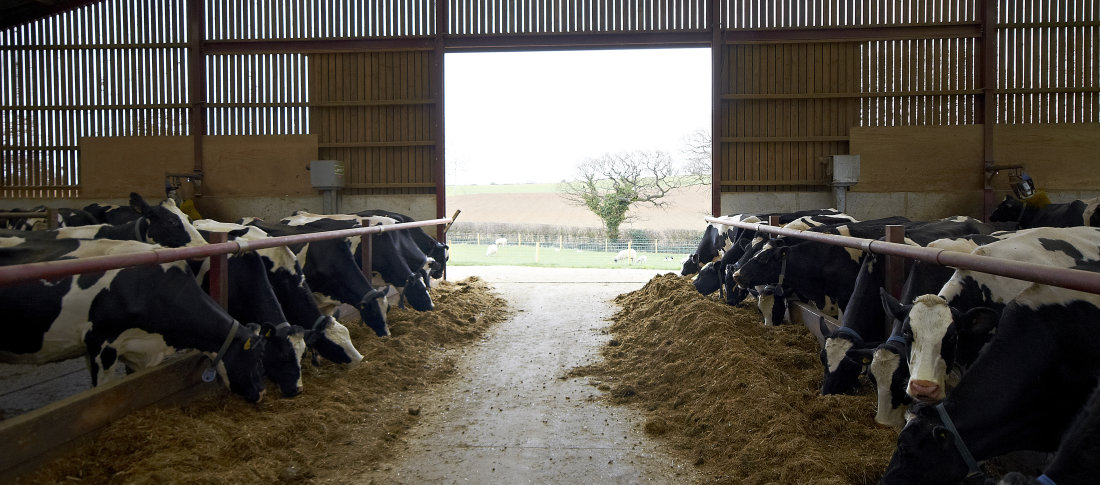Low milk yields are incredibly frustrating. But taking a holistic approach to cow welfare - from body condition to nutrition - will help to make sure your dairy herd is as productive as possible.
Dairy cows are generally at their most productive when they are happiest and healthiest. It’s a simple equation. But by no means is it easy to get right. As a dairy farmer, you have an awful lot to think about when it comes to the welfare of your herd. But putting the extra effort in to give your cows the nuanced, comprehensive, year-round care they need will likely be rewarded with enhanced milk yields - day after day after day.
Here are some quick tips.
Never underestimate the importance of good nutrition
Nutrition: it’s important for us humans, and it’s important for cows too.
In fact it’s the most critical thing to get right if you want to optimise your milk yields. When your cows receive all the nutrients they need to stay fit and healthy, they are far more likely to reach their genetic potential in terms of milk production. That means their diets must have the right amounts of all the important macronutrients and food groups: fat, carbohydrates, protein, fibre, minerals and vitamins. Simple on paper, harder in practice.
But remember: if you put quality in, you get quality out.
Good basal nutrition will also help to make sure any dietary supplements you are feeding to your herd achieve the desired outcome, so giving you better value for money.
Make sure your herd receives enough dietary fat
Dairy cows need energy. Lots of it. The most efficient way of providing it is through fat: the most energy-rich nutrient of them all. Fat is incredibly effective at providing the fuel necessary to maintain body condition and boost milk production. So far, so good. But where do you find these sources of fat?
All of the productivity-boosting fatty acids your cows need can be found - in varying amounts - as ingredients in common cow feeds, so get used to paying extra attention to ingredients lists. Palm oil is high in palmitic acid. Rape seed oil is high in oleic acid. Linseed and ryegrass is high in linolenic acid (omega-3).
>> Meet the fats that can transform dairy cows’ health and productivity
These fatty acids can improve milk yield and increase milk fat percentage. The challenge is making sure your dairy herd receives the right amount of these fatty acids. Basal forage concentrate rations typically supply around 3-3.5% fat in dry matter. Yet that’s often not enough for dairy cows. High-yielders may need over 6% fat in dry matter - especially during early lactation.
So how do you make up the deficit?
A rumen-protected fat supplement - such as Megalac - is an easy way to make sure the energy your dairy cows require is delivered in the most efficient way possible, with none of the negative effects on fibre digestion that come with rumen-active (unprotected) fats. Best of all, Megalac has been scientifically proven to increase milk yields.
>> How to maintain a healthy rumen in dairy cattle
Lots and lots (and lots) of water
It’s bad news if your herd runs out of the wet stuff, because cows have one serious thirst. Dehydration negatively impacts milk yields, so water provision is one of the most important things to get right. Each of the cows in your dairy herd needs to guzzle around 60 litres of water per day. High-yielders may get through around 100 litres.
Make sure your herd has regular access to plenty of clean drinking water at multiple places across your site. Dairy cows are particularly parched after milking. So make sure there’s a water point near the exit of your parlour.
Get the disease prevention basics right
It’s obviously important to maintain good vaccination programmes. But steering clear of productivity-slaying diseases is about more than the occasional jab from your veterinary specialist. It goes beyond that - and vaccinations should never be used as an excuse to cut corners on animal welfare.
Winter welfare requires a little extra effort...
When Jack Frost gets to work and the winter weather hits, you have a little extra to think about if you want your dairy herd to remain as productive as possible. Dairy cows feel the cold and burn more energy simply to keep warm. That may require increasing your herd’s dietary intake.
Help is at hand. Here are a couple of articles that will help you ensure your herd remains productive and profitable through the frosty winter months.
>> Five easy ways to keep your dairy cattle warm this winter
>> Cow comforts: keeping your cattle productive in winter housing
Clean and comfortable bedding will make your cows smile
Happy cows make for productive cows. That’s why bedding is important. After all, you like a clean and comfortable place to rest - and cowkind is no different. Sand beds or straw helps to ease the stress on knees and hocks - and will help wet cows to dry off faster in the winter months.
Set the scene for your next generation of dairy cattle
Improving your milk yield isn’t just about what you do today. It’s about thinking forward to create the conditions for tomorrow’s generation of dairy cows to thrive too. Nutrition can help to improve fertility - and there are two key fatty acids you should look out for. Linolenic acid (as found in Mega-Flax) helps to improve embryo survival, while oleic acid (as found in Megalac) promotes the development of viable eggs.
Over to you...
Dairy farming can be simple, but nobody said it was easy. It takes a solid commitment to maintain high levels of care across all parts of nutrition, health and welfare. Yet if you are prepared to put the extra effort in, it’s likely you will be rewarded with radically improved milk yields. For specialist advice on dairy cow nutrition, visit www.megalac.com.
